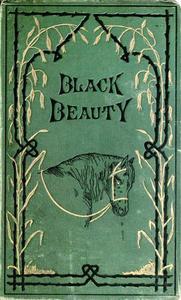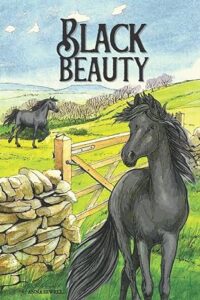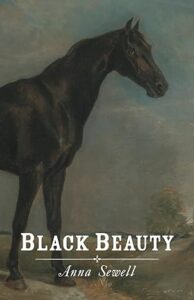The Book Corner:
Black Beauty
by Anna Sewell


NYSHA’s Humane Education Committee has a new feature to offer our members: we will include book reviews in future newsletters to give our members more tools to spread the word about animal advocacy. For our first offering, there can be no better choice than Black Beauty, written by Anna Sewell and published just before her death in 1877. Most animal advocates, especially horse lovers, read this timeless novel in our childhoods. It depicts the widespread mistreatment of horses and other forms of societal abuse in Victorian England, when cruelty to horses was much more common than today as horses provided the major sources of transportation and power.
In the first few pages, Sewell shows us the cruelty that horses are subjected to in sport and the excruciating pain of canine ear crops and tail docks, depicting both the puppies’ agony and their mother’s distress. Sewell stresses the cruelty to horses of tail docking, abusive training methods, and painful harnessing techniques that satisfied that era’s notion of “fashion” in carriage horse equipage.
We follow Black Beauty’s fate as he descends the rungs of that era’s social order due to human mishandling — first as the prized riding and carriage horse of the aristocracy, then as the property of middle class owners, then as a public carriage horse for hire, then as a London cab horse, and eventually to his end in a final peaceful and loving home where, coming full circle, he is cared for by one of his earliest human devotees.
 Along the way, Sewell shows us how horses are helpless pawns, treated well by kind humans and abused by ignorant, dishonest, or alcoholic ones who alter each horse’s future fate by their mistreatment of their equine victims. Black Beauty hears of the slaughter of hundreds of horses in the Crimean War’s Charge of the Light Brigade from a retired cavalry horse, and narrowly escapes death in a stable fire that claims the lives of terrified horses who could not be saved in time.
Along the way, Sewell shows us how horses are helpless pawns, treated well by kind humans and abused by ignorant, dishonest, or alcoholic ones who alter each horse’s future fate by their mistreatment of their equine victims. Black Beauty hears of the slaughter of hundreds of horses in the Crimean War’s Charge of the Light Brigade from a retired cavalry horse, and narrowly escapes death in a stable fire that claims the lives of terrified horses who could not be saved in time.
Throughout Black Beauty’s saga, we are introduced to uncaring humans who cause suffering in their equine charges as well as in humans who intercede on behalf of mistreated horses, begging their owners to be kinder. Sewell is diligent in focusing on the whole spectrum of suffering in Victorian England, stressing that the London cabbies abused their horses due to their employers’ greed, forcing their employees to overwork themselves and their charges in order to feed their families, resulting in the illnesses and breakdowns of both human and horse. In contrast, she describes proper training methods, harnessing, and stabling designs throughout her novel to educate the reader on overall humane husbandry in hopes of minimizing the suffering that horses endured. In telling her tale thorough a horse’s perspective, it provides a view that was unique in that era, opening our own hearts 140 years later to remember how each person’s actions promote either pain or pleasure in the sentient being on the receiving end. Holly Cheever, DVM, Board VP
New York State Humane Association Humane Review, Vol.XXXIII, Fall 2018.